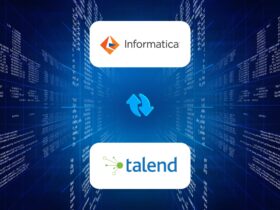Cloud Governance for Data warehouses
Data analysis of business information, data processing, data mining, predictive analysis etc. are few of the many functions that a business enterprise follows. A specific system is used to collectively perform these functions. A data warehouse is one such system that allows you to store data from one or more sources. The ability to store current and historical data in one place allows one to perform easier data analysis and reporting.
Given that the data warehouse is the metadata of the entire organizational data concerning employees, customers, credit card details, organization’s trade secrets etc., data governance plays a critical role. Data warehouse is susceptible to a wide variety of cyber attacks from malicious attackers, both internal and external to the organization. To protect super sensitive data, any ordinary data governance and security seems to be inefficient.
Data governance is primarily following a set of processes, roles, policies, standards, and metrics to ensure data efficiency and accuracy. This in turn leads to the organization performing better analytics on top of the data and hence produce more meaningful insights which contribute to the progress of the organization. A specific data governance framework is adopted by each organization to ensure consistent operational roles and responsibilities that are controlled and maintained by specific groups, hence the data integrity is established throughout the organization.
Why is it so important to include data governance for an organization?
Below are few of the reasons:
- Data governance allows you to map the data which helps in locating the data with key entities and this is very critical for data integration. This also makes the data usable and helps in drawing quicker insights.
- Data can be understood in a clearer way as data governance provides a consistent view and common terminology for data across the entire organization.
- It ensures the data is complete, consistent, and accurate. This removes any kind of unusable data, making the entire database cleaner and more efficient.
- In the legal and security sections, the data is highly automated and thus data consistency is achieved easily.
Usage of cloud integration strategies are what most of the organizations are aiming towards. Cloud data warehouse solutions like Snowflake, Amazon Redshift provide a very efficient security. Irrespective of which platform is used, it is the responsibility of the organization to optimize privacy and compliance. Data governance acts as an entire package providing data quality, data architecture, data modeling and design, data storage and operations, data security, data integration and interoperability, and data warehousing and business intelligence.
There are several tools that are used for data governance. Majority of them provide both cloud and on-premise services. Few of the popular data governance tools include OvalEdge, Truedat, Xplenty, Atlan, Collibra, Alteryx, Informatica, Cloudera Enterprises etc. Each tool provides its own set of pros and cons. Collibra provides quick responses whereas IBM is more suitable for its integration capabilities. Alteryx is good for data analytics and Talend provides data integration solution irrespective of the size.
Overall, all the tools provide these below mentioned functionalities:
- The tools help in improving the quality of the data by validating, cleansing, and processing of the data.
- Data is easily captured and understood.
- Data is managed using ETL and ELT. Data is also tracked along data pipelines.
- Data is continuously monitored and reviewed. This helps in controlling the data.
#RandomTrees #CloudGovernance #Datawarehouse










